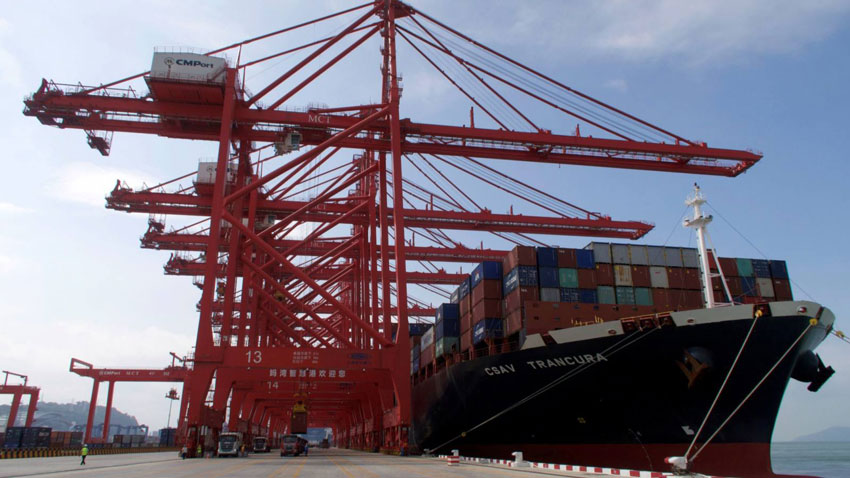
Editor's note: Wang Tao is China's leading economist at UBS Investment Bank. The article reflects the views of the author.
China's exports to November far exceeded expectations. Exports increased from 11.4 percent to 21.1 percent year-on-year in November. Both export processing (2.2 percent to 16.8 percent) and average exports (17.1 percent to 23.7 percent) have increased significantly. In particular, electronic transmissions increased rapidly during the month, with mobile phone sales exceeding 20 percent annually earlier to 29 percent, while for LCD panels (20 percent), ADP equipment (34 percent) and electronic ICs (26 percent) all accelerated by 10-16 points from the previous month. The UBS technology team sees the DRAM motorcycle, anticipating growth to track the need for 2021 in the memory space. Meanwhile, exports of cars (15 percent y / y to 38 percent y / y compared to the high base) and car parts also gained momentum in November. Consumer exports have improved across the board and, especially toys (up to 50% y / y), suitcases, furniture, and lamps, reflecting the strong demand for overseas holidays, although shoe shipments are soft.
Exports to the U.S., EU, and Japan declined sharply in November despite the epidemic worsening - by 17 percent by 32 y / y - contributing more than half to the development of further export growth. In particular, exports to the US increased by 46 percent y / y, while those to the EU accelerated to 26 percent, both helping in some way on a lower level last year. Export power is probably the result of a resurgence of jobs in the U.S. and EU in the fall before the epidemic worsened recently. PMI studies and labor market indicators have improved in Q3 and early Q4 before declining more recently. Besides, reducing holiday trips and outdoor dining can also help divert consumer spending and home and holiday expenses.
China has acquired shares in world markets since Q2 2020
China has received a global market share since Q2, mainly in the EU and Japan. While coming in and out of COVID-related shocks and lockdowns in the past, the Chinese brand is back online in Q2 and was able to meet the global demand when the whole world is hit by the epidemic. As a result, China gained market share from Q2 after a significant decline in Q1. Its share of exports increased to 16.7 percent in Q2 2020 (+ 3.5ppt y / y), before a slight decline in Q3 to 16 percent (+ 2ppt y / y).
Protective clothing and home demand were major donors. In the US and EU markets, the largest driver of market value comes from textiles and clothing (including masks and PPE) as well as electronics, which means 2.4 ppt and 2.1 ppt of the total market capitalization of 5.3 ppt in Q2, respectively.
China's Asian neighbors also received market share while Mexico and Canada lost. China’s share of U.S. and EU imports gained 5.3ppt y / y to 23 percent in Q2, while Vietnam and South Korea also increased, by 0.6ppt and 0.4ppt, respectively. Stock markets in Malaysia, Thailand, and Indonesia have also improved slightly. In contrast, Canada and Mexico lost market share by 2ppt y / y and 1.6ppt, respectively, in the US and EU markets. These trends continued in Q3, although the gap in market gains between China and other Asian economies has diminished, perhaps as the product resume develops elsewhere in Asia. The divergence between China / East Asia and elsewhere may be due to better epidemic control in the Asian economy, hence the strength of the supply chain.
Can China support strong export growth by 2021?
Global demand may decline soon but is expected to become more stable by 2021. Demand may be reduced in the short term because of US ISM and Eurozone PMI indicators dealing with the worsening epidemic and re-tightening of travel restrictions. This could mean weak exports in the next few months. However, by the year 2021 as a whole, UBS expects global GDP growth to reach 6 percent from a nearly 4 percent decline this year and has seen global industrial production rise from 5.8 percent to 6.2 percent of percent by 2021. and it will rise sharply next year as more and more inspired needs are released and as labor and labor markets improve.
The resumption of operations in other economies could reduce the return on the export rebound to China. In recent months, exports of other EMs, especially Asia from outside China, have become increasingly available, due to the slow pace of work. For example, Vietnam's export growth picked up 10-11 percent y / y in July-November, as well as the Taiwan region (6 percent in Q2 and 10 percent in October-November). Going forward, with the help of vaccines, we anticipate a resurgence of employment in the developed and emerging economies alike (for example, the textile and textile industry in India and Bangladesh), which is likely to create more competition exported to China and prevent a rebate. That said, the distribution of vaccines is likely to be slow, especially in EM, and demand for DM could rise faster than the supply of EM vaccines in 2021.
The necessary structural modification could also weigh heavily on China’s growth exports by 2021. According to our analysis, anti-COVID products and home-related products have contributed to China's exports and share profits from Q2, particularly in the developed economy. . Looking ahead, as the global epidemic exists in 2021, particularly in the U.S. and the EU, the demand for face masks and protective clothing is likely to decline, and that some small household and electronic devices may be reduced. In addition, as it finds use in tourism, outdoor dining, and related services, consumers can reduce the cost of allocated goods to them.
This may be especially true in the U.S., where UBS Economics expects a slight decline in consumer spending on goods and a significant increase in services. Such a change is likely to also weaken Chinese exports to the U.S. in 2021.
The continued depreciation of the yuan could also begin to hurt exports in 2021. The yuan has been highly valued since the end of May 2020, up 8.4 percent against the dollar and 3.6 percent against the CFETS basket. However, the announcement was much modest at the beginning of the year, and export orders were stronger than expected in part due to disruptions in production elsewhere. By 2021, we expect the RMB to face additional pressure to thank the weak dollar. Our forecast for USDCNY trade is about 6.4 by the end of 2021 as China cuts cash outflows, but CNY could be very pleased over the year. The power of CNY can have negative effects on China's foreign trade, especially if other competing investors are less aware of it compared to the dollar.
Strong export growth but no market share profit in 2021
We anticipate that the expected return on global consumer goods and technological advancement should go beyond eliminating obstacles from improved re-employment elsewhere and declining demand for protective goods and home products. As indicated earlier, we expect China's exports to increase by 11-12 percent by 2021, although it is unlikely to become the world's leading exporters. China's export growth could be strongest in Q1 2021 due to low bases and declined to one low level by the mid-second half of the year. The worst of our basic forecasts are mainly the reduction of expected global demand, the sharp decline in epidemic-related products, the rapid resumption of production elsewhere, and the dramatic change in DM spending away from goods to services. While we expect China's export growth to return to 9 percent in real terms next year, the risk is even greater, especially given the recent exports.








